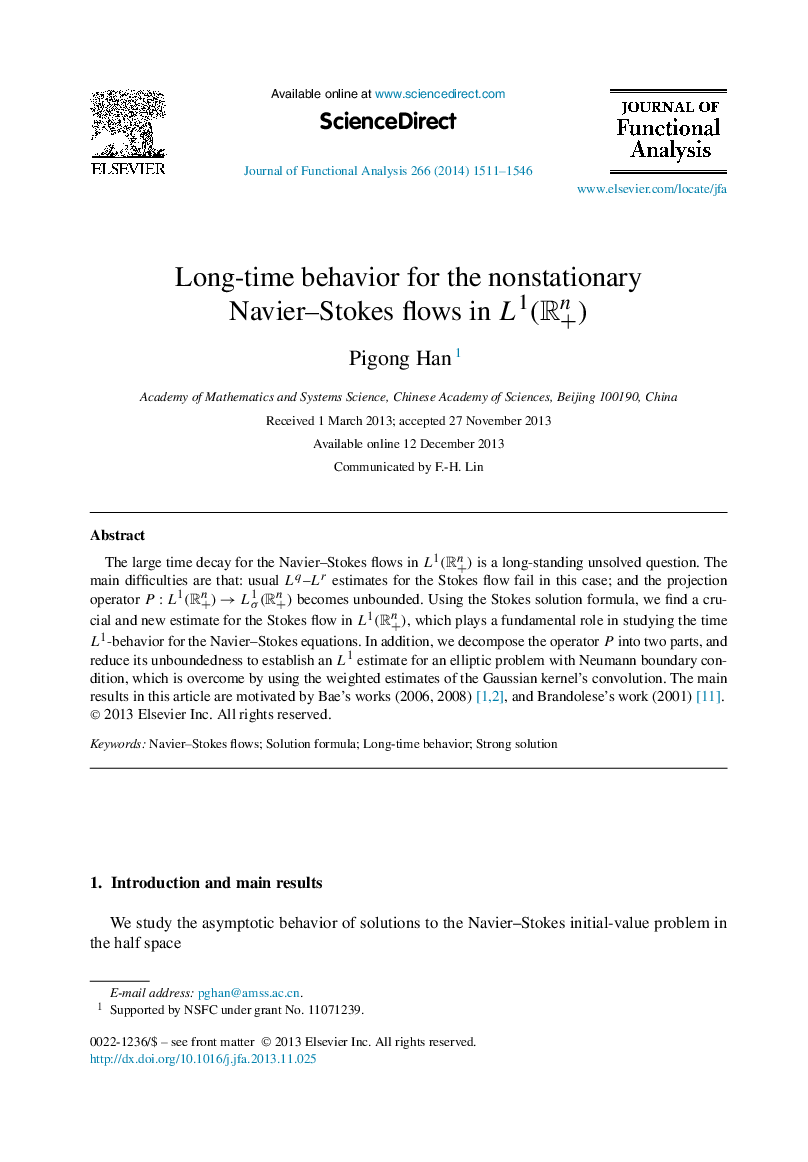| Article ID | Journal | Published Year | Pages | File Type |
|---|---|---|---|---|
| 4590539 | Journal of Functional Analysis | 2014 | 36 Pages |
The large time decay for the Navier–Stokes flows in L1(R+n) is a long-standing unsolved question. The main difficulties are that: usual Lq–LrLq–Lr estimates for the Stokes flow fail in this case; and the projection operator P:L1(R+n)→Lσ1(R+n) becomes unbounded. Using the Stokes solution formula, we find a crucial and new estimate for the Stokes flow in L1(R+n), which plays a fundamental role in studying the time L1L1-behavior for the Navier–Stokes equations. In addition, we decompose the operator P into two parts, and reduce its unboundedness to establish an L1L1 estimate for an elliptic problem with Neumann boundary condition, which is overcome by using the weighted estimates of the Gaussian kernelʼs convolution. The main results in this article are motivated by Baeʼs works (2006, 2008) [1] and [2], and Brandoleseʼs work (2001) [11].
